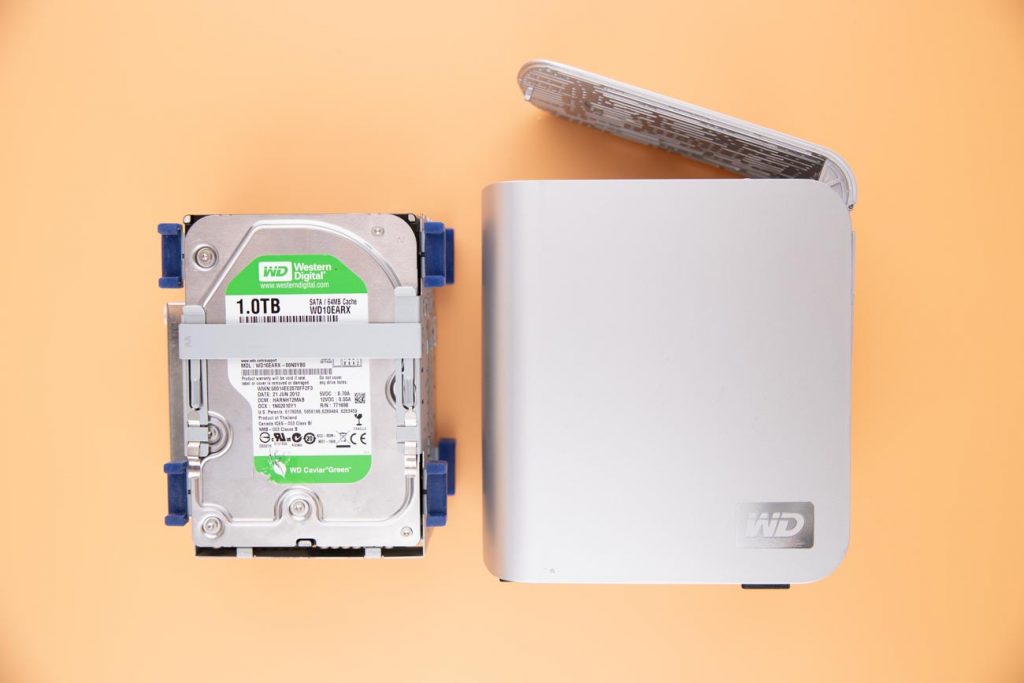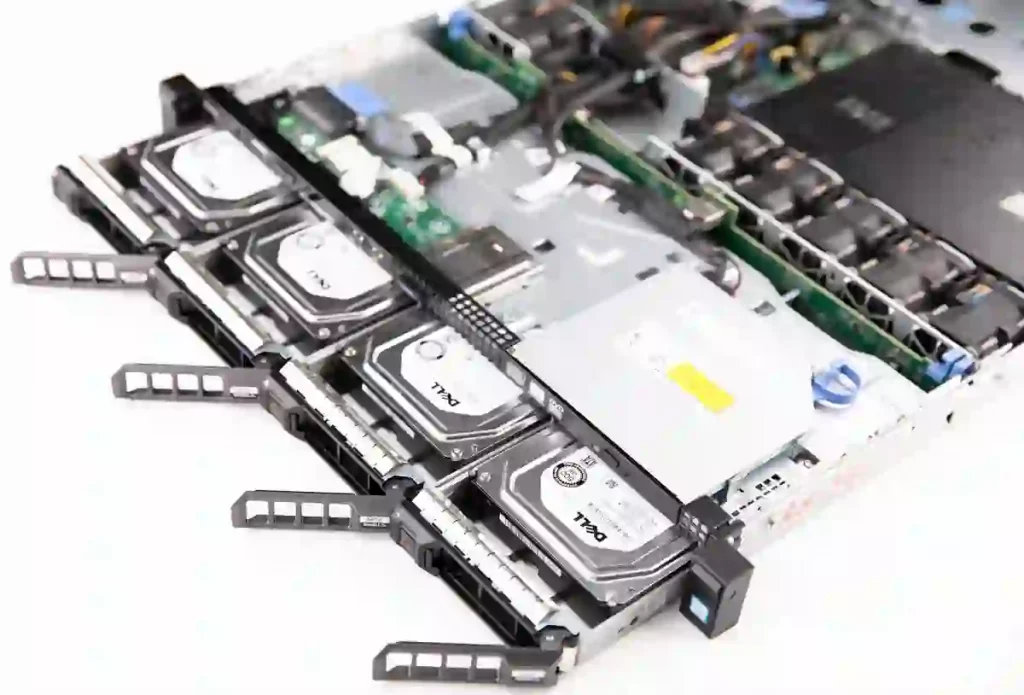A Network Attached Storage is a reliable solution for home users and small-sized enterprises. NAS offers its durable work, data protection, and high storage of capacity due to the implemented RAID system.
A Redundant Array of Independent Disks is a flexible solution for any type, brand, and model of NAS. Used for better performance, RAID delivers several benefits for NAS devices. However, to obtain all the advantages of RAID usage on your device, it is essential to find the most efficient RAID level.
NAS with RAID - Various RAID Configurations
RAID 0
RAID 0 is a combination of two or more hard drives within the system. These drives are used to increase the storage capacity and performance but do not provide fault tolerance. Hence, a fault within one of the drives results in the inaccessibility of all the files in the array.
Our team does not recommend using RAID 0 in your NAS, as it provides less reliability than other levels. This level splits data across multiple drives, so there is no complete copy of your data stored somewhere safe.
In conclusion, using RAID 0 on NAS is possible, but it is risky. It does not provide redundancy for the device, which makes it susceptible to complete data loss situations.
RAID 1
RAID 1 often consists of two drives. Data is mirrored, so the system provides fault tolerance and has lower consequences of failure.

Read performance increases and write performance is equal to the speed of the individual hard drive.
Failure of a single drive does not result in complete loss of data. RAID 1 is used when fault tolerance is a high priority and capacity or performance is of secondary importance.
If we consider RAID 1 usage in NAS, it is preferable to use it for NAS with two bays. However, if you have an opportunity to use more drives in your Network Attached Storage, then we recommend considering other RAID levels.
RAID 5
RAID 5 is one of the most widespread levels. It provides fault tolerance and a high level of performance. RAID 5 requires at least three disk drives. This level offers resiliency if one drive fails and data from it is restored using parity. After the recovery, the data is distributed to the remaining disks.
However, the failure of one of the disks does not stay unnoticed, as the read/write speed significantly decreases. RAID 5 is a great solution when capacity and cost are more significant factors than performance.
For NAS, RAID 5 is a great option, as it delivers many benefits. However, when installing the disks within a system, a user must ensure that two of the drives have the same capacity so that the third one is saved for redundancy.
RAID 6
RAID 6 is similar to RAID 5, but it uses an additional level of striping and continues to work even if two drives fail. At least four disks are required for RAID 6. Because of its increased fault tolerance, RAID 6 has a lower performance compared to RAID 5. RAID 6 is the preferred choice when space and cost are of great importance, and you need to ensure resiliency in the event of hard drive failure.
However, our team does not recommend using RAID 6 for less than six-bay NAS systems.

In this case, more drives will be allocated for redundancy instead of storage.
RAID 10
RAID 10 combines the benefits of RAID 1 and RAID 0. Read and write performance is increased, but only half of the space is available for data storage. Four or more disks are required so that NAS can provide high performance and fault tolerance.
RAID 10 delivers resilient operation when multiple disks fail, as long as these failures do not occur in the same subgroup. RAID 10 is the best solution for applications with high I/O requirements, such as database servers.
RAID 10 is a reliable option for NAS devices with more than eight bays. Of course, it can be used with fewer bays, but it is more beneficial to use RAID 5 or 6 for these systems.
What is the Best NAS RAID Option
One of the most flexible solutions that can suit any of your requirements is RAID 5. This level provides redundancy and high storage capacity for your device, slightly affecting the performance. Similar to RAID 5, RAID 6 is also a recommended option for you, with the additional redundant drive.
In general, our team recommends choosing a RAID level based on your storage needs. It is crucial to assess your expectations from the NAS and use this evaluation to inform your decision-making process. This way, you will choose the most efficient RAID system for your Network-Attached Storage.
Which RAID is the most dependable
RAID 6 is the most reliable RAID configuration for NAS devices, known for its excellent fault tolerance. It protects your data even if two disks fail, making it a top choice for data safety. As a dual parity RAID, it requires at least four disks to operate.

While RAID 6 ensures high data protection, it does not boost performance and can reduce data writing speed. For reliable data storage solutions, RAID 6 on your NAS device is a solid option.
Which File System is Best for RAID
Selecting the appropriate file system for your RAID configuration impacts its performance and dependability. Here are a few choices:
- Ext4: Popular for RAID configurations due to its stability and broad support across Linux distributions.
- NTFS: Preferred by Windows users for its compatibility and robust features.
- Btrfs: Gaining popularity for advanced features like snapshotting and self-healing, making it ideal for data integrity.
- XFS: Known for excellent support of large files and parallel I/O operations, perfect for high-performance applications.
Ultimately, the best file system depends on your specific needs and the environment of your RAID array. Are you facing data loss on your NAS? If so, please do not hesitate to contact us. Our experts are prepared to help you recover data and ensure your storage system runs smoothly again.
Frequently Asked Questions
Why Should I Use RAID for NAS?
Using RAID for NAS (Network Attached Storage) enhances data protection, availability, and performance. It provides fault tolerance so that even if one or more disks fail, your data remains accessible and safe.
What is the Best RAID Level for Performance?
RAID 0 is often considered superior for performance as it spreads data across multiple disks, enhancing both read and write speeds. Nonetheless, RAID 0 lacks fault tolerance, so if a disk malfunctions, all data will be lost.
What is the Most Cost-Effective RAID Solution?
RAID 5 is commonly seen as the most economical option. It provides a well-rounded mix of performance, storage effectiveness, and fault tolerance through the distribution of parity data across the disks. It requires a minimum of three disks to function.
Is RAID 0 Suitable for Critical Data on NAS?
RAID 0 isn’t recommended for essential NAS data due to the lack of fault tolerance. If a disk fails, all data is lost. RAID 0 is better suited for situations prioritizing performance where data loss is tolerable.
How Do I Choose the Right RAID Configuration?
Choosing the right RAID configuration depends on your specific needs, including data security, performance, storage capacity, and cost. Consider factors such as the number of disks you have, your budget, and the importance of fault tolerance versus performance.
